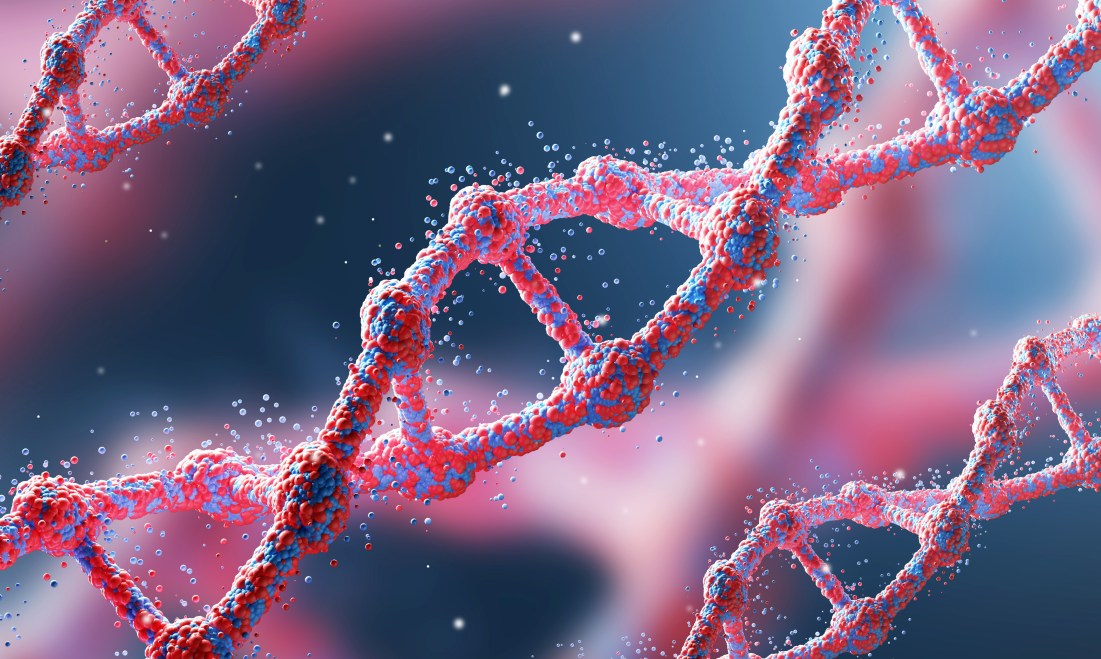The modern era of artificial intelligence depends on data—continuous, high-volume, and high-velocity streams of it. Whether predicting customer behavior, optimizing supply chains, or personalizing digital experiences, AI models require data that reflects the present moment. Static data pipelines are no longer sufficient for businesses that need instant insights and responsive decision-making. To meet this demand, real-time data pipelines have become the backbone of AI-driven systems. They ensure that data flows seamlessly from diverse sources to analytics platforms and machine learning models without delay.
This article presents a comprehensive guide to building a real-time AI data pipeline using two powerful technologies: Apache Kafka, the open-source distributed event-streaming platform, and Fivetran, a leading data integration and automation tool. Together, they provide a scalable, flexible, and automated foundation for continuous data ingestion, transformation, and model deployment. This guide explores every aspect of the process, from conceptual architecture and data design to streaming analytics and integration with AI systems.
Understanding the Role of Real-Time Data in AI
Artificial intelligence systems rely on data not just for training but also for inference and feedback loops. A model trained on outdated information quickly loses accuracy in a world that changes by the minute. Real-time data allows AI to adapt dynamically to new signals, ensuring its predictions remain valid. This capability underlies applications such as recommendation engines, fraud detection, predictive maintenance, and operational intelligence.
Real-time AI pipelines connect data sources—such as IoT devices, web applications, databases, APIs, or logs—to data consumers, including data warehouses, feature stores, and machine learning systems. The pipeline continuously extracts, processes, and routes data with minimal latency. The goal is to create a continuous flow of information that can trigger automated responses, update AI models, or drive visual dashboards.
The defining feature of a real-time AI data pipeline is stream processing. Unlike batch processing, where data is collected and processed periodically, stream processing treats data as a continuous flow of events. Each event represents a change in the system, such as a user interaction, sensor reading, or transaction. By capturing and analyzing events as they occur, real-time pipelines enable instant decision-making.
The Architectural Foundations of Real-Time Data Pipelines
A real-time data pipeline architecture consists of several essential components: data producers, ingestion layers, transformation and processing stages, storage systems, and consumer layers. These elements work together to transport and refine data in motion.
Data producers generate events. These can be mobile apps, transaction systems, IoT sensors, or APIs. The ingestion layer is responsible for capturing this raw data in real time. Apache Kafka serves as the backbone of this layer, providing a durable, scalable, and fault-tolerant message broker that stores and streams events across distributed systems.
The processing layer transforms, enriches, and aggregates data as it flows through the system. This may involve filtering noise, joining streams, or applying machine learning models for inference. Frameworks such as Kafka Streams, Apache Flink, or Spark Structured Streaming often handle this stage.
Storage layers serve both real-time and historical analytics. For fast access and computation, data may be stored in in-memory systems like Redis or real-time databases such as ClickHouse. For long-term storage and training dataset preparation, warehouses such as Snowflake, BigQuery, or Databricks Lakehouse are used.
Finally, the consumer layer delivers data to downstream applications—dashboards, APIs, alerting systems, or AI services. Fivetran plays a crucial role here by automating data extraction, transformation, and loading (ETL/ELT) across diverse systems.
Apache Kafka: The Core of Real-Time Streaming
Apache Kafka was designed to handle high-throughput, low-latency data pipelines. At its core, Kafka is a distributed log system where data is written to topics as streams of immutable events. Producers publish events to these topics, and consumers subscribe to them, reading messages at their own pace.
Kafka’s architecture ensures scalability and resilience. Topics are divided into partitions distributed across brokers, allowing parallel processing and fault tolerance. Each event is stored in an ordered sequence, and consumers maintain offsets to track progress. This design enables Kafka to manage trillions of events per day in production environments.
Kafka supports both publish-subscribe and queue-based consumption patterns, making it suitable for a wide variety of use cases—from event sourcing to microservice communication. With features like replication, exactly-once semantics, and schema management (via Confluent Schema Registry), Kafka provides enterprise-grade reliability for mission-critical pipelines.
In the context of AI, Kafka acts as the streaming backbone. It collects data from operational systems, web services, or IoT devices, and routes it to processing engines and data warehouses. This enables continuous feature updates for machine learning models, ensuring they always operate on the freshest data.
Fivetran: Automating Data Integration
Fivetran complements Kafka by simplifying the process of extracting and loading data from disparate sources into analytical and AI-ready environments. Unlike traditional ETL tools that require manual configuration and maintenance, Fivetran automates schema detection, data synchronization, and pipeline orchestration.
Fivetran connectors support hundreds of data sources, including SaaS platforms (Salesforce, Shopify, HubSpot), databases (PostgreSQL, MySQL, Snowflake), and event streams. By continuously replicating data from these systems, Fivetran ensures that analytical environments remain synchronized with source systems in near real time.
In an AI pipeline, Fivetran handles the ingestion of structured and semi-structured data into warehouses or lakes where it can be joined with event streams from Kafka. This hybrid integration model allows organizations to unify historical batch data with live event data for holistic insights.
Because Fivetran automates schema evolution and transformation management, teams can focus on higher-level tasks such as feature engineering and model deployment instead of maintaining fragile pipelines. The combination of Kafka’s real-time event streaming and Fivetran’s automated integration creates a powerful and reliable data foundation for AI.
Designing a Real-Time AI Pipeline
The design phase of a real-time AI pipeline determines its scalability, latency, and reliability. Before implementing any technology, it is crucial to understand the flow of data, define system boundaries, and establish performance objectives.
A well-architected pipeline begins with defining the sources of data. These might include application logs, transaction databases, sensor networks, or external APIs. Each source must be configured to publish events to Kafka topics in real time.
Next, the stream processing layer must be defined. Depending on complexity, this could involve simple transformations performed using Kafka Streams or complex computations using Apache Flink or Spark Streaming. In AI pipelines, this layer often includes feature extraction—calculating rolling averages, aggregations, or embeddings that serve as inputs to machine learning models.
The storage and analytics layer bridges streaming data with persistent storage. Some data, such as transient logs or clickstreams, can be stored temporarily in Kafka for real-time analysis, while other data must be persisted in warehouses or feature stores for long-term access.
Finally, the consumption layer connects AI and analytics applications. This may include dashboards powered by Looker or Tableau, model serving frameworks like MLflow, or automated decision systems.
Implementing Kafka for Streaming Data
Setting up Kafka begins with deploying a cluster consisting of multiple brokers. Each broker manages a portion of topics and partitions. For reliability, data is replicated across brokers, ensuring that a node failure does not lead to data loss. Zookeeper or Kafka’s built-in Raft protocol handles coordination and metadata management.
Once deployed, producers are configured to publish events to Kafka topics. These producers may be application servers, microservices, or Fivetran connectors that capture change data capture (CDC) events from databases. Each event is serialized in a format such as Avro, JSON, or Protobuf, ensuring schema consistency.
Consumers subscribe to topics to receive and process events. They may represent AI feature stores, data processors, or analytics systems. Kafka’s consumer groups allow multiple consumers to read from a topic in parallel, distributing the workload and maintaining order within each partition.
Monitoring is critical in Kafka deployments. Tools such as Prometheus and Grafana track metrics like broker throughput, partition lag, and consumer latency. Proper monitoring ensures that the system remains healthy under varying workloads and prevents bottlenecks that could delay downstream analytics or AI computations.
Integrating Fivetran for Automated Ingestion
With Kafka handling real-time streams, Fivetran integrates structured and historical data. Setting up Fivetran involves configuring connectors to source systems and specifying destination warehouses or lakes. Once configured, Fivetran continuously syncs data using incremental updates or change data capture.
For instance, a company might use Fivetran to replicate CRM data from Salesforce and order data from Shopify into Snowflake. Kafka simultaneously streams live clickstream events from web applications. When these datasets converge in the warehouse, analysts and AI systems gain a complete, up-to-the-minute view of customer behavior.
Fivetran manages schema evolution automatically. When a source system adds new fields, Fivetran detects and integrates them without manual intervention. This automation eliminates a major source of pipeline fragility and ensures continuous availability.
Fivetran also supports transformation logic within the warehouse using SQL-based transformations or integration with tools like dbt (data build tool). These transformations prepare data for downstream use in analytics dashboards or AI feature engineering.
Building Real-Time Feature Stores
A key component of an AI data pipeline is the feature store, which acts as a centralized repository for machine learning features. It ensures consistency between training and inference by serving the same computed features in both contexts.
Kafka provides an ideal backbone for real-time feature computation. Stream processors consume events from Kafka topics and compute derived features—such as rolling averages, counts, or embeddings—before writing them to the feature store. This guarantees that models receive fresh and consistent inputs.
Feature stores such as Feast, Hopsworks, or Tecton integrate seamlessly with Kafka streams. They allow real-time updates, versioning, and monitoring of feature values. By combining batch data from Fivetran and streaming data from Kafka, feature stores bridge the gap between historical and real-time information, improving model accuracy and stability.
Stream Processing for AI and Analytics
Stream processing transforms raw event data into actionable insights. Kafka Streams, a lightweight Java library, allows developers to process streams directly within Kafka without deploying separate clusters. It supports operations such as joins, windowed aggregations, and filtering.
For more advanced use cases, Apache Flink provides a high-performance distributed stream-processing framework. Flink integrates deeply with Kafka and supports event-time semantics, allowing accurate processing even when data arrives out of order. In AI pipelines, Flink is often used to generate feature aggregates or detect anomalies in streaming data.
Streaming transformations can include normalization, enrichment, and entity resolution. For instance, raw transaction data may be joined with user metadata from Fivetran-ingested tables, creating a unified event stream enriched with contextual information. This stream can feed directly into dashboards or be used for online model inference.
Managing Schema and Data Quality
Data quality and schema management are essential for reliable pipelines. Kafka’s Schema Registry ensures consistent serialization and deserialization of events, preventing downstream consumers from breaking when schemas evolve. Producers register schemas, and consumers validate incoming data against these definitions.
Fivetran maintains schema integrity by automatically adapting to source changes and preserving metadata lineage. It tracks transformations and provides data lineage visibility, allowing teams to trace errors back to their origin.
Quality control involves monitoring metrics such as completeness, accuracy, and latency. Automated validation jobs can flag anomalies—missing fields, duplicates, or unexpected values—and trigger alerts. Ensuring high data quality is especially critical for AI pipelines, as low-quality inputs lead to unreliable model outputs.
AI Model Integration and Real-Time Inference
Once data flows continuously, the next step is integrating AI models into the pipeline. Real-time inference allows models to process streaming events as they arrive, generating predictions or actions immediately.
One approach involves deploying model-serving frameworks such as TensorFlow Serving, TorchServe, or MLflow alongside Kafka consumers. Each event consumed from Kafka is passed to the model, and the output is published to another topic or API endpoint. This architecture enables fully automated decision systems—for example, detecting fraudulent transactions or recommending products in milliseconds.
Batch-trained models can also benefit from continuous retraining using Fivetran’s data synchronization. Historical and recent data stored in warehouses are used to periodically retrain models, while Kafka provides live feedback for performance evaluation. This combination ensures models remain current with evolving data patterns.
Monitoring and Observability
A real-time AI pipeline is a living system that must be continuously monitored. Observability covers metrics, logs, and traces across all components—from Kafka brokers to Fivetran connectors and AI models.
Kafka monitoring tools provide visibility into producer rates, consumer lag, topic sizes, and cluster health. Fivetran offers dashboards for connector performance, sync status, and data latency. Together, these tools ensure end-to-end transparency.
Integrating observability platforms such as Grafana, Prometheus, or OpenTelemetry enables unified visibility across the stack. Alerts can automatically notify operators of anomalies like lag spikes, schema errors, or missing data streams. In AI contexts, monitoring also extends to model drift—tracking whether prediction distributions deviate from expectations.
Security and Governance
Security is fundamental to real-time data pipelines, especially when handling sensitive information. Kafka supports authentication via SSL, SASL, or Kerberos, and authorization through Access Control Lists (ACLs). Data can be encrypted at rest and in transit, ensuring compliance with privacy regulations.
Fivetran also adheres to enterprise security standards, offering role-based access control, encryption, and audit logs. It integrates with identity providers for single sign-on (SSO) and multi-factor authentication.
Data governance ensures proper handling, retention, and lineage tracking. Metadata catalogs such as Apache Atlas or Alation can be connected to the pipeline to document data sources, transformations, and usage. For AI pipelines, governance extends to explainability and accountability—tracking which data influenced each model prediction.
Scaling and Performance Optimization
As data volumes grow, scalability becomes a core consideration. Kafka achieves horizontal scalability by adding more brokers and partitions. Proper partitioning strategies—such as key-based partitioning—ensure balanced loads and ordered event processing.
Performance optimization involves tuning producer and consumer configurations. Batch sizes, compression types, and acknowledgment settings can significantly affect throughput and latency. Compression formats like Snappy or LZ4 balance speed and efficiency for high-velocity streams.
Fivetran scales automatically by parallelizing extraction and loading across multiple threads. For high-frequency data sources, connector sync intervals can be reduced to near-real-time, while load balancing prevents bottlenecks in the destination warehouse.
Case Study: Building a Real-Time Customer Intelligence Pipeline
Consider an e-commerce company seeking to personalize its website experience. Kafka streams live events such as page views, clicks, and cart updates from the front-end application. At the same time, Fivetran synchronizes historical purchase data from the transactional database and customer profiles from the CRM.
These data sources converge in a feature store that computes behavioral scores, preferences, and churn probabilities. A recommendation model consumes these features in real time to generate product suggestions tailored to each visitor.
As customers interact with the website, Kafka continuously updates their behavioral features. If a user abandons a cart, the pipeline triggers a targeted promotion or retention campaign automatically. This closed feedback loop exemplifies how Kafka and Fivetran enable real-time AI at scale.
The Future of Real-Time AI Data Engineering
The landscape of real-time data engineering is evolving rapidly. Emerging technologies such as Kafka Connect, Debezium, and cloud-native event platforms extend the reach of streaming pipelines. Serverless stream processors and managed Kafka services simplify deployment while maintaining performance.
AI pipelines are increasingly integrating real-time feedback loops, where predictions influence future data streams. Online learning techniques allow models to adapt continuously without retraining from scratch. Meanwhile, low-latency feature stores and vector databases enable instantaneous semantic search and recommendation.
As data ecosystems mature, the convergence of streaming and batch paradigms—known as the unified data model—will dominate. Tools like Apache Beam and Databricks Lakehouse are pioneering this direction, allowing seamless switching between real-time and historical analytics.
Conclusion
Building a real-time AI data pipeline with Kafka and Fivetran represents the frontier of modern data engineering. It transforms static data systems into living, adaptive infrastructures capable of responding instantly to change. Kafka provides the foundation for event-driven architectures, enabling reliable and scalable streaming, while Fivetran automates the integration and synchronization of structured and unstructured data.
Together, these tools empower organizations to harness the full potential of real-time AI—delivering faster insights, smarter automation, and competitive advantage. From predictive analytics to personalization and operational intelligence, real-time pipelines turn data into an ever-flowing stream of intelligence.
The journey to build such a system requires careful design, robust architecture, and continuous monitoring, but the reward is a self-sustaining ecosystem where data fuels intelligence and intelligence, in turn, drives action. The integration of Kafka and Fivetran marks not just an evolution in data engineering but a fundamental shift toward truly intelligent, responsive systems that learn and act in real time.






